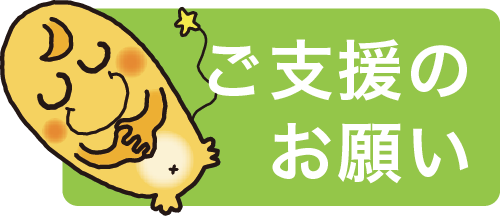Workshop Ⅵ “The Current Situation Concerning the Handling of Animals Affected by the Great East japan Earthquake – Considering Material Contamination.”Organizer:Japan Veterinary Medical Association The role of a veterinarian extends much further than the examination of pets and farm animals. It involves various medical categories that help keep society safe relating to both animal health and public health. The former includes protecting livestock from infectious diseases (eg. foot-and-mouth disease and bird flu), while the latter includes food safety and preventing zoonotic infections. |
![]()

The Current Situation Concerning the Handling of Animals
Affected by the Great East Japan Earthquake
Nobuhiko ITO, Director, Kitasato Institute,
Dean, School of Veterinary Medicine, Kitasato University
![]()
The reason why the Great East Japan Earthquake has produced a totally different situation from that of any previous major earthquake is that it has resulted in radioactive contamination across a wide area. This in turn has created three additional special problems for those engaged in animal rescue activities. Firstly, rescue workers have been exposed to radioactivity in some places where they were performing rescue activities; secondly, affected animals were exposed to both external and internal contamination by radioactive matter; and thirdly, rescue workers were not permitted access to the caution zone within a 20km radius of the damaged nuclear power plant.
The fate of many animals left inside the caution zone when their owners disappeared was not death caused by radiation but pain and death from starvation. But even in these circumstances, some of the animals whose owners deliberately released them from their cages or chains survived. In the case of dogs, cats, etc., sheltering activities have been continued with reference to the guideline document, “Methods of coping with radioactive contamination of animals’ bodies – urgent tentative measures”. This was introduced on the website of the Japan Veterinary Medical Association. However, with regard to farm animals, the chief of the Nuclear Emergency Response Headquarters ordered Fukushima Prefecture to euthanize livestock within the caution zone. Nevertheless, the current situation is that more than 1,000 runaway cattle and many feral pigs still survive within the caution zone. Animals within the zone have internal radioactive contamination and have become difficult to control so it is becoming harder to capture them safely.
In the face of government policy, those farming households that agreed to euthanize their cattle now feel that their animals were destroyed for no purpose. Moreover, there have been requests both from within Japan and from overseas to rescue animals from the caution zone or to use them for research that can benefit people. In response, the Chairman of the Japan Veterinary Medical Association did change his request to the affected parties, such that research using cattle contaminated by radioactive materials in the caution zone began in November. A research project has also started in an effort to evaluate the radioactive contamination of the forests that occupy 70% of the land area in Fukushima Prefecture. This is being done by surveying the internal radioactive contamination of wild animals living in the forests. These examples demonstrate that research into the effects of the Fukushima Nuclear Power Plant accident on wildlife has just begun.
Animal Rescue Operations for Small Animals
Jun KAWAMATA
Veterinarian, Great East Japan Earthquake Disaster Animal Rescue Task Force,
Chiba Small Animal Clinic, Fukushima City
![]()
The Great East Japan Earthquake was one of the most powerful earthquakes to have occurred anywhere in the world in modern times. The earthquake and the accompanying tsunami caused enormous damage in Fukushima Prefecture just as it did in the nearby prefectures of Miyagi and Iwate. But additionally, in Fukushima, the tsunami triggered a major nuclear disaster which has greatly compounded the impact of the original natural disaster.
According to a report from Fukushima Prefecture, prior to the disaster, approximately 10,000 dogs and cats were living within the so-called “caution zone”. It is estimated that approximately 60 to 70% of these animals died either in the tsunami or else from subsequent starvation, weakness, etc. At present, around 400 to 500 dogs and cats are estimated to be living in the caution zone, and the authorities are actively attempting to rescue these animals. However, in the current situation, the work of protecting these animals is not going smoothly because they have become more cautious of people and because the presence of radioactivity makes it difficult to carry out rescue activities.
Fukushima Animal Rescue Headquarters was set up a month after the disaster struck by five organizations as members – namely Fukushima Prefectural Government, Fukushima Veterinary Medical Association, the governments of the two core cities of Koriyama and Iwaki, and the animal welfare volunteer association Fukushima-ken Dobutsu Aigo Volunteer Kai, with Fukushima Prefecture also playing an overall management role. But at that time, when the national and prefectural governments and the veterinary association were operating in a state of extreme confusion, and in a situation in which we Fukushima residents were also forced to live precariously day to day, it was difficult for the organizations to carry out animal rescue activities monolithically.
The Animal Rescue Headquarters has dealt with the situation by installing shelters at two locations in Fukushima Prefecture and its operations are financed from public donations provided by the Emergency Animal Rescue Headquarters and by support from people all over Japan. But since the scale of the disaster was unprecedented, the amount of money required to keep the work going and manage the operation is huge, with the result that funds are in short supply. In addition, the Headquarters also suffers from a chronic shortage of volunteers. In the current situation, in which the closure of the shelters is nowhere in sight, insufficient funds and manpower are the major problems.
Through this massive disaster I have become acutely aware that if prefectural governments and veterinary associations carry out animal rescue activities by themselves, they are bound to come up against all kinds of problems and limitations. To work effectively, it is necessary to install a large-scale organized authority in which the government and the people are united.
For the future, in order to prepare in advance for major disasters, it will be essential to build up a more broadly based animal support system and also to produce a manual that can serve as a guide to operating such a system.
Considering Responses to Radioactive Material Contamination
Toshihiro SATO,
Veterinarian, Medical Care Division Head,
Production Department, Fukushima Prefecture Dairy Farming Association
![]()
In Fukushima Prefecture, only a few livestock farms sustained direct damage from the recent earthquake. However, due to the severing of lifelines, damage to dairy factories and other facilities, interruptions in distribution due to fuel shortages and other reasons, it took more than two weeks before production activities returned to normal. Moreover, the dairy industry’s problems were further compounded when the shipment of raw milk was halted on account of the nuclear power accident.
While the radioactive contamination situation was invisible to the eye, a nuclear power accident evacuation order was issued for people in the Hama district within a 20km radius of the plant, while those living between 20 and 30km of the plant were ordered to remain indoors. These orders remained in force for over a month. During that time, cattle owners attempted to evacuate their animals while remaining on their farms or commuting to and from their evacuation sites. The Dairy Farming Association also tried to remove some livestock to secure locations in consultation with the administration. However, from April 22, when the area within the 20km radius was designated as a caution zone, conditions were such that it became virtually impossible to help the livestock and they had to be left unattended. In the beginning, slaughtering the animals and disposing of the carcasses was considered, but there was nowhere suitable either as a working environment or as a disposal site for the carcasses as industrial waste, so most of the animals died of starvation. I heard that, by the middle of May, the situation meant that there were heaps of carcasses. Such images, taken by people returning to their homes temporarily, and by volunteers, were brought to the world’s attention by the mass media. Even so, restoration work made little progress. I then heard that the situation continued beyond the end of September and it created a sense of doom and gloom in the minds of livestock owners and people involved in stockbreeding.
On the other hand, with other livestock such as cattle and pigs having been let loose and turning feral in the disaster area, new problems are expected to emerge in the future. By this I mean the broadening of the contaminated area due to uncontrolled breeding or interbreeding with wild animals, etc.
Secondly, we have witnessed not only the distribution of radioactive material contamination in the local living environment but also the topographic and biological concentration of radioactive materials as time goes on. Many issues remain to be tackled in order to maintain local farming, and we also need to take a multifaceted approach that includes product monitoring, production cycle verification, checking systems, risk communication, and decontamination technology development, etc.

